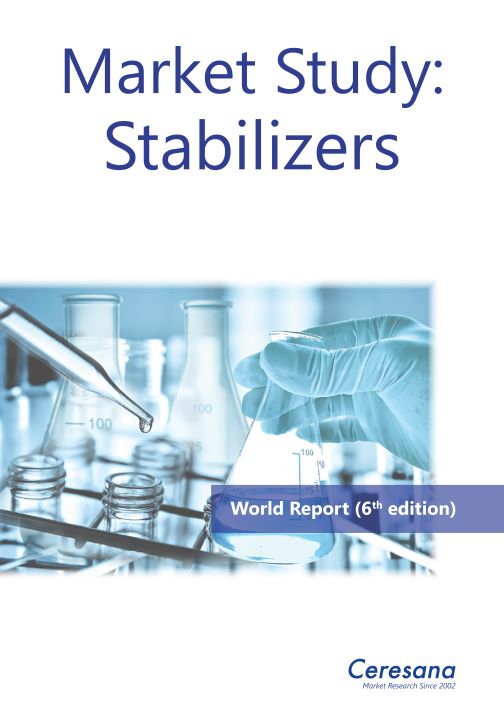Cables, pipes and window frames should ideally last forever. In most cases, they do if they are made of PVC – provided the material is protected with stabilizers against the harmful effects of oxygen and sunlight. Without stabilizing chemicals, many plastic and rubber products would be destroyed after a short time by heat, oxidation or UV rays. This is the sixth time that Ceresana has investigated the global market for these essential additives: The market research institute expects revenues from stabilizers for plastics and elastomers to grow to USD 7.3 billion annually by 2031.
Thermostabilizers and UV stabilizers
The plastics industry requires large quantities of stabilizers, especially for the production and processing of polyvinyl chloride (PVC). The most important application is plastic pipes, for which more than 400,000 tonnes of stabilizers are currently consumed each year. Behind them come profiles, cables, films and other applications. Accordingly, demand for stabilizers is primarily determined by developments in the construction industry. Regional differences are striking: In Europe, stabilizers are mainly needed for PVC profiles, while in Asia they are used for pipes. Components made of plastic can help save energy. Growing environmental awareness worldwide is therefore one reason for the rising demand in stabilizers.
Alternative stabilizers wanted
Stabilizers are mostly based on heavy metals such as lead or tin, but also on calcium, liquid metal soaps and other starting materials. In the European Union, the industry has been phasing out the use of lead-based stabilizers since 2015; the recycling of PVC with lead stabilizers is still controversial. By now, calcium-based stabilizers are by far the most demanded type in Europe. In other regions, demand for alternative, more environmentally friendly stabilizers is also increasing. Ceresana forecasts global demand for calcium-based stabilizers to grow by 3.2% per year. Sales of tin stabilizers are expected to reach around 237,000 tonnes in 2031. Tin stabilizers account for the highest share of the overall market in North America. Globally, Asia-Pacific is the largest market for stabilizers with a share of around 61%, followed by Western Europe.
Current market data on stabilizers
Chapter 1 of the new Ceresana report provides a presentation and analysis of the global market for plastic stabilizers – including forecasts up to 2031: demand as well as revenues are explained for each region of the world. In addition, global and regional demand per product type and per application area is analyzed. Different types of stabilizers are considered in detail: tin stabilizers, lead stabilizers, calcium-based stabilizers, liquid mixed metal stabilizers, and other products. The study also examines the application areas for stabilizers: pipes, profiles, films, cables, floorings, other applications. Chapter 2 analyzes demand for stabilizers and the revenues generated by them for 22 countries. Demand is examined in detail for each type of stabilizer and for the various application areas. Chapter 3 provides useful company profiles of the most important producers of stabilizers for plastics and elastomers. The manufacturer directory is clearly arranged according to contact details, revenues, profits, product range, production sites, short profile as well as product types and application areas. Detailed profiles are provided by the 72 most important manufacturers, such as Akdeniz Chemson Kimya San. Tic. A.S., BASF SE, DIC Corporation, Evonik Industries AG, Lanxess AG, Mitsubishi Chemical Corporation, PT Timah Tbk, Shin-Etsu Chemical Co., Ltd., Solvay S.A., Songwon Industrial Co., Ltd., and Sumitomo Chemical Co., Ltd.
Further information about the new market study “Stabilizers” (6th edition): https://ceresana.com/en/produkt/stabilizers-market-report-world

About Ceresana
As one of the world’s leading market research institutes, Ceresana specializes in the chemicals, plastics, packaging, and industrial goods sectors. Special focus areas are bio-economy and automotive / mobility. Since 2002, companies have benefited from high-quality industry analyses and forecasts. Over 200 market studies provide more than 10,000 clients around the world with the knowledge base for sustainable success.
More about Ceresana at www.ceresana.com
Ceresana
Mainaustrasse 34
78464 Konstanz
Germany
Press Contact: Martin Ebner, m.ebner@ceresana.com
